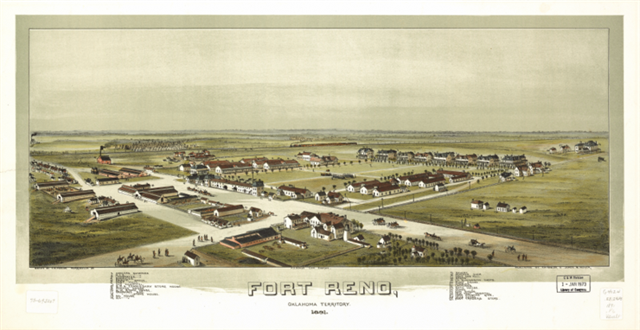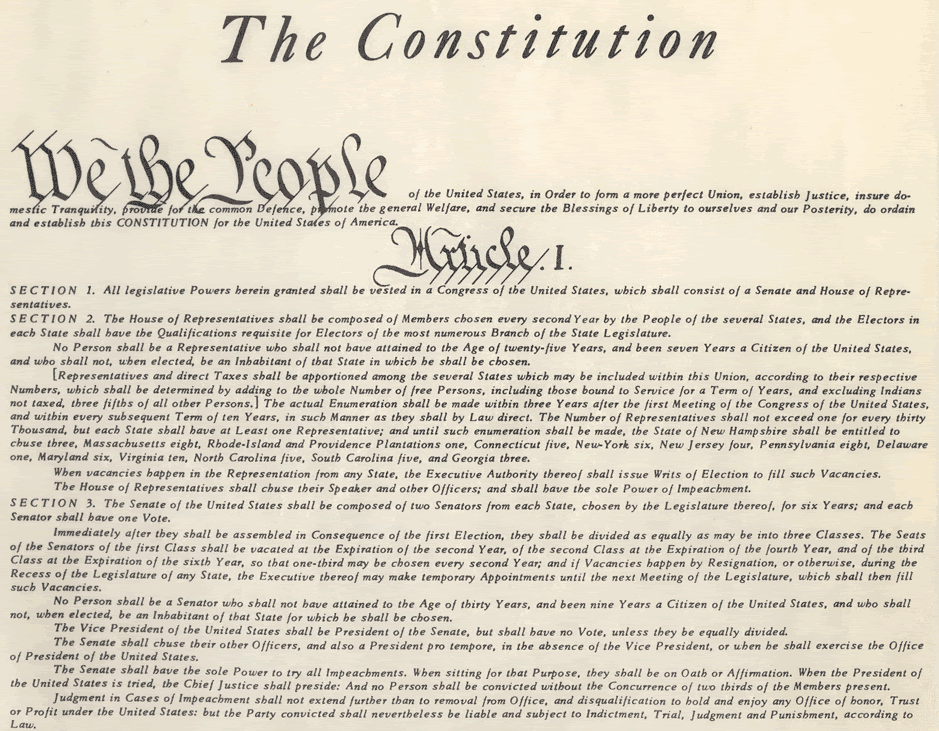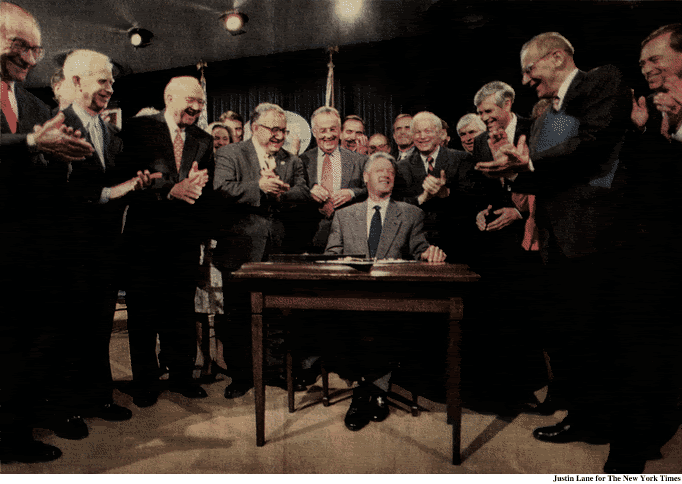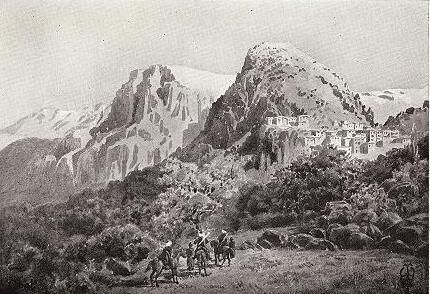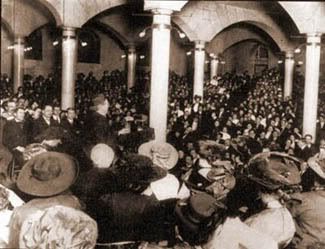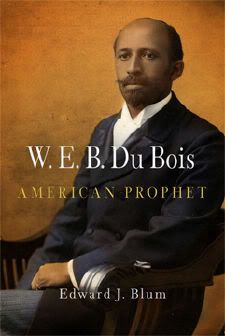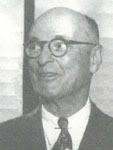by Unknown | 5/31/2008 09:00:00 PM
 Welcome to the Sixty-Fifth History Carnival! I'm your host, Jeremy Young, and we're honored to have you here with us.
Welcome to the Sixty-Fifth History Carnival! I'm your host, Jeremy Young, and we're honored to have you here with us.When last we convened at this location, I showed you how a little history could be used to liven up a Senate committee meeting. Today, however, there are more pressing things on the political docket -- things like, for instance, the upcoming Presidential election. (Disclaimer: I'm an Obama supporter, but I've tried to make the ensuing text as nonpartisan as possible.) As everybody knows, there's a series of debates between the nominees coming up this fall. But while Presidential debates are certainly historic events, history itself isn't often discussed at these venues. At least, it hasn't been in the past. I'm betting that this year, that's going to change...
History Carnival LXV: The First Debate
The Cast (in order of appearance):




Jim Lehrer -- Veteran newsman, author, and debate moderator extraordinaire
Barack Obama -- Democratic Senator from Illinois, spellbinding orator, and guy with "the audacity of hope"
John McCain -- Republican Senator from Illinois, war hero, and "maverick"
Ralph Nader -- Consumer advocate, Green Party nominee, and "dude who generally ruins everything"
The Scene: A debate hall at a major (and unnamed) state university, somewhere in Middle America

Jim Lehrer: Greetings all, and welcome to today's debate. Without further ado, let's get to the opening statements. Gentlemen, you have two minutes apiece. Senator Obama, we flipped a coin last night, and then we got really drunk and woke up in an alley in Chicago, but we think we remember you won the coin toss.
Barack Obama: Thank you, Jim -- and I hope you're feeling better this evening. Now, I'm sure you're all expecting me to talk about the audacity of hope and all that stuff, but I'm going to make a little departure from my stump speech for a moment. See, I've been reading some really interesting things about history, and I think it's really relevant to this campaign.* For instance, I've been reading about John Burrow's A History of Histories in a post by Robert McHenry at Brittanica Blog, Whig History and Whig Biography. Robert has some interesting things to say about the inherent whiggishness of narrative history. If you don't see the relevance of that to the 2008 campaign, read Tom S. at Rustbelt Intellectual, who writes in an appreciation of the late Charles Tilly, Charles Tilly's Flight, that social science should be based on research and data rather than unsubstantiated theory. Social science and data are important parts of a president's job. Also, Larry Ferlazzo has an excellent post on The Best Websites for Teaching and Learning About World History. World history is really important for preparing yourself to lead America in her foreign affairs.
John McCain: If you need any preparation, that is.
Obama: Whatever. Anyway, Rachel Leow at A Historian's Craft has written a great post on The Entwined Perils of Narrowness and Overambition in planning and writing a dissertation. Now you've got to admit that when considering my opponent, narrowness and overambition are some of the first things that come to mind.
Lehrer: Now, now, Senator, play nice.
Obama: Sorry, Jim. Anyway, as I was saying, another relevant historical post is David Kaiser's at History Unfolding on Reason and Emotion. David argues that the Enlightenment ideal of reason has faded in American society in recent years. If I may be permitted an example, when Senator McCain here said "Bomb, bomb, bomb, bomb, bomb Iran," he wasn't thinking rationally.
Lehrer: Senator! I think we'll declare your time expired if you're going to attack your opponent like that. Senator McCain, your turn.
McCain: Thank you, Jim. I agree with my opponent that history's important, but I think it's Democrats who misread it more often than not. Take Senator Hillary Clinton, for example. Ahistoricality has written a post called Unspeakably Banal in which he berates Clinton for comparing outsourcing to the Holocaust -- on Holocaust Rememberance Day. And Arica Coleman writes at HNN in a post called Hillary Clinton and the Possessive Investment in Whiteness that Clinton's racism has roots in early American feminism.
Obama: John, don't you think it's a bit rude of you to attack a woman when she's not even here to defend herself? That reminds me of an excellent post in Law Matters on Domestic Violence in the Press a Century Ago, which relates some truly shocking incidents that should make any American ashamed.
McCain: Um, Barack, when you were running against Senator Clinton, you attacked her all the time.
Obama: Oh. Right. Nevermind.
Lehrer: (Clears throat) Thank you both very much. For our first question, I'd like to know what each of you plans to do about the Iraq War.
Obama: Jim, I'd like to know why nobody talks about the war in this country any more. It's been nearly forgotten, just like World War I. John Quiggin writes at Crooked Timber that WWI is The Great and Unremembered War. I called Iraq a dumb and rash war before it even started. Why doesn't anybody remember that?
McCain: I'm a war hero. There were plenty of big wars in history, and little ones too. Like the war between Texas and Mexico, for instance. Alex at Military History and Warfare writes in The Texan War of Independence: Musings on the Alamo that there's a great museum at the Alamo with exhibits on that war. The Civil War was an important war too. Did you know that there were Germans who fought at Chancellorsville? Brett Schulte at TOCWOC -- A Civil War Blog has written a review of Chancellorsville and the Germans by Christian B. Keller, and he can tell you all about that. Meanwhile, Mark Grimsley at Civil Warriors has begun a series called Hard Warrior about his first book, The Hard Hand of War. That's about the Civil War too, did you know that? In fact, wars were going on way back in 1686, when a bunch of New England Puritans revolted against the Royal Governor of New York, Edmund Andros. Lori Stokes at The Historic Present chronicles this battle in The Dominion of New England; Or, The Puritan Revolution. Even gender historians have gotten into the war game. Gavin Robinson at Investigations of a Dog reviews one of these books, Joshua Goldstein's War and Gender.
But you know what, Jim? Nobody knows anything about any of these wars, because there's an Academic Jihad Against Military History. At least that's what Mark Safranski at Zenpundit says. So nobody wants to talk about those other wars. They're only interested in the Iraq War. I think that's dumb. Why is Iraq any better than those other wars?
Obama: I read an article about The Kentucky Cave Wars. It's by Dave Tabler of Appalachian History, and it discusses the epic battles in the 1920's between rival cave owners who wanted tourist traffic to go to their caves and not those of others. And I also heard from midtowng at ProgressiveHistorians about Clara Lemlich and the Uprising of the 20,000, an important labor strike in 1909 in the United States.
McCain: You idiot! Those aren't real wars. You don't know anything about real wars because you've never been in the military. You're no better than Senator William Borah of Idaho, an ardent isolationist who supported Hitler! Kevin Murphy at Ghost in the Machine may have given Borah a sympathetic treatment in Great Borah's Ghost! but I know better.
Lehrer: Gentlemen, gentlemen! Next question, please. Senator McCain, what do you think the future holds for America?
McCain: Nothing good. America was once great, and then the Democrats came along and wrecked it all.
Obama: You know what that is? That's a declension narrative. I hate declension narratives, and so do two guys I respect a whole lot: Timothy Burke and Kevin Levin. Burke, who writes at Easily Distracted, objects to declension narratives in In My Day... and Levin, who writes at Civil War Memory, discusses Declension Narratives in Civil War History.
McCain: I bet they're not mavericks like me.
Obama: Whatever, John. As for me, I think the future is going to be defined by digital endeavors. Just listen to the stuff my friends in the history blogosphere have been talking about. For instance, Robert Townsend at AHA Today writes in Celebrating Change: Online Databases and Collegiality in the Discipline that new online source aggregators aid collegiality among historians and other academics. That sounds an awful lot like my unity message. Here's another example: at Old is the New New, Rob MacDougall's writing up a series of "concept courses" that are designed to travel through the blogosphere amd spark other academics to create actual innovative history courses. So far, he's produced three: The Great Game,
The Backwards Survey, and On a Planetary Scale, the last one of which he's actually planning to teach this coming year. Databases are the way of the future, too, and they can be used for some really valuable things. For instance, Jack Lord at History of Africa has found tons of African history in the records of the Old Bailey prison, which are now online.
McCain: I'm an old codger. I don't like this new Internets stuff. I prefer things from a long, long time ago, like Greg Carrier's article at In The Middle on Medieval Disability. Greg gives an excellent overview of that emerging field of historical inquiry. Or have a look at Mary Beard's skeptical post at A Don's Life, The Face of Julius Caesar? Come Off It! Mary questions whether a recently-discovered Roman bust really depicts old Julius or someone else instead. Even older than the Caesar bust is a papyrus depicting Renaissance-style drawings that may or may not be a forgery. Judith Weingarten discusses the fascinating case in detail at Zenobia: Empress of the East in her post The Baker's Daughter and the Artemidorus Papyrus.
More recently, but still a really long time ago, Napoleon cavorted with his Polish mistress. Now Elizabeth Kerri Mahon at Scandalous Women has written a post about her entitled Royal Mistresses: Marie Walewska. The Internet wasn't necessary for digging canals from the St. Lawrence River in the early 1900's; good old maps did just fine, including the one posted by Doug Grant at Brockville History Journal in his post called, appropriately, Map of the St. Lawrence River Canals - 1907. And in fact, databases themselves may not be as new as we think -- or so argues Whitney Trettien at Diapsalmata in her post Narrative, Database and Media History. Whitney's found prototype mechanical databases dating back all the way to the 13th century.
Obama: I'm too young to remember any of that. But I do recall what a terrible guy Richard Nixon was. Rick Perlstein does too, and he's recently written a book about it called Nixonland. At TPMCafe, Rick continues his discussion of Nixon and his relevance to present-day America in Taking the Adversary Seriously: History and Condescension.
McCain: I remember Nixon a lot differently from that. But you know, memory's an interesting topic too. Janice Liedl has a great post up about how Canadians and Americans go about Celebrating Discovery, and how our memories of European explorers four centuries ago are shaped by events today. And Heather Stein at Sybilla Oritur writes about modern remembrance of Queen Victoria in her post Victoria Day/Fete des Patriotes. The study of memory has an interesting history, too. Dave Munger at Cognitive Daily writes about The Origins of the Study of Memory and discusses the contributions of Hermann Ebbinghaus in the 1880's. In other news, my memory's not what it used to be.
Obama: Yeah, I know. You forgot to take your meds today!
McCain: Why, you --
Lehrer: Please, gentlemen, control yourselves! Let's talk about something else.
Ralph Nader: (Appears from behind a post and punches Lehrer in the nose. A shocked Lehrer falls out of his chair, and Nader calmly sits down in it.) Yeah. Let's talk about murder!
McCain and Obama: But --
Nader: Murder's an important topic of conversation, and one not discussed nearly enough in Presidential debates. Maybe that's because they're always excluding me from those debates. Well, no longer! Now I'm here, and I'm going to talk about murder.
McCain and Obama: But --
Nader: Let's start with a fascinating post by L. H. Crawley at The Virtual Dime Museum about The Pulitzer Murder Case. Did you know that the grandson of Brigham Young was convicted of murder? You would have if you'd read this post, or if you'd let me in the debates. Or, apparently, if you'd hung out with a lot of journalists, a surprising number of whom seem to have been the last people to see assassination victims alive. At least that's the provocative argument made by Lisa Pease at Real History Blog in her post Journalists Who Are the Last to See Someone Alive.
Obama: Ralph. You can't do this. Here we were having a nice debate, full of potshots and platitudes, as all debates should be, and here you come charging in bringing up a depressing subject like murder. You need to leave right now.
Nader: Fascist! You're a fascist! All Democrats are fascists! Just like FDR. Alonzo Hamby at POTUS may argue convincingly in FDR Watch: The New Deal and Fascism that FDR wasn't a fascist, but I know better. Shame on you! All right, if you're not interested in murder, let's talk about something more interesting. Are you a Sampson man or a Schley man?
Obama: What?
McCain: No, I know what he's talking about. He's read a really interesting post by Elementary Historyteacher at History is Elementary, Fess Up! Are You a Sampson Man or a Schley Man? It's about a once-heated argument as to which of two men really won a naval battle in the Spanish-American War. I should know; I was in the Navy. Did I mention I'm a war hero?
Obama: You may be a war hero, John, but I'm a religious man. Ed Blum at Religion in American History has written a really interesting juxtaposition of books on Bill Bright and A. Philip Randolph, called New Twentieth-Century Religious Biography. Bet you didn't know that, with all your war-hero-ness.
McCain: Did too!
Obama: Did not!
McCain: Did too!
Obama: Did not!
Nader: (Turns to camera) While they're squabbling over there, I thought I'd introduce you to some of my other interests. Some of them you've probably heard of: I'm a pro-labor kind of guy, for example, so I like strikes of any kind. As such, I was encouraged to read a post by Sayaka Chatani at Frog in a Well -- Korea on School Strikes in Colonial Korea: 1937-1939. Sayaka's unearthed some really interesting details about the incompatibility of Japanese and Korean educational systems during the Japanese occupation of Korea. In the same vein, I really like Ann Little's post at Historiann about "Dr. Colorado" on the 1908 DNC in Denver and Sister Jan on Early Modern Women's Labor History. Ann chronicles a brother-and-sister historian team who work on, respectively, American political history and Canadian women's labor history -- both subjects I'm interested in. And you won't be surprised to learn that I'm no fan of immigration restrictions or of treating immigrants as second-class citizens. So I'm just as outraged as Eric Rauchway at The Edge of the American West by the anti-Chinese-immigrant Supreme Court decision he discusses in his post Supreme Laws are Promissory Notes Redeemable at Debtor's Discretion.
But I've also got some interests you might not expect. For example, I'm very fond of the novels of Henry James, which is why I highly recommend a post by Caleb Crain at Steamboats are Ruining Everything entitled Impediments. Crain provides a nuanced explication of whether James' latent homosexuality is reflected in his novels, particularly Roderick Hudson. I'm also interested in 19th-century Australian cultural history, so I found Melissa Bellanta's post at The Vapour Trail, Brisbane Larrikins, absolutely fascinating. And finally, I wanted to let you know that I'm interested in --
(Lehrer finally gets his footing, and deals Nader such a rapping about the ears that the Green Party candidate falls out of his chair.)
Lehrer: Murder! Australian cultural history! Whaddaya think this is, a History Carnival or something? I've had enough of this. That's a wrap, fellas. Thanks for watching this debate; tune in for another one next month. (Under his breath) If we can get the candidates to behave, that is...
Obama: Did not!
McCain: Did too!
Nader: (Struggling to his feet) Fascists!
(Curtain falls)

Well, that's all for today, folks. If you're a member of today's cast, I'm very, very sorry about all this; otherwise, hope you enjoyed the show, and be sure to check out all the posts the "candidates" recommended!
The next History Carnival will be hosted by Jeremy Young at ProgressiveHistorians. (Looks over shoulder apprehensively) Oh, wait. That's me. How did I get dragged into this again?
Anyway, please submit your recommendations via e-mail or using the new, spiffed-up nomination form. See you all next time -- thanks to all who submitted recommendations!
*A terribly cheap trick, I know, but how else was I supposed to get some of these posts into the "debate" format?
Labels: History Carnival, Jeremy Young




